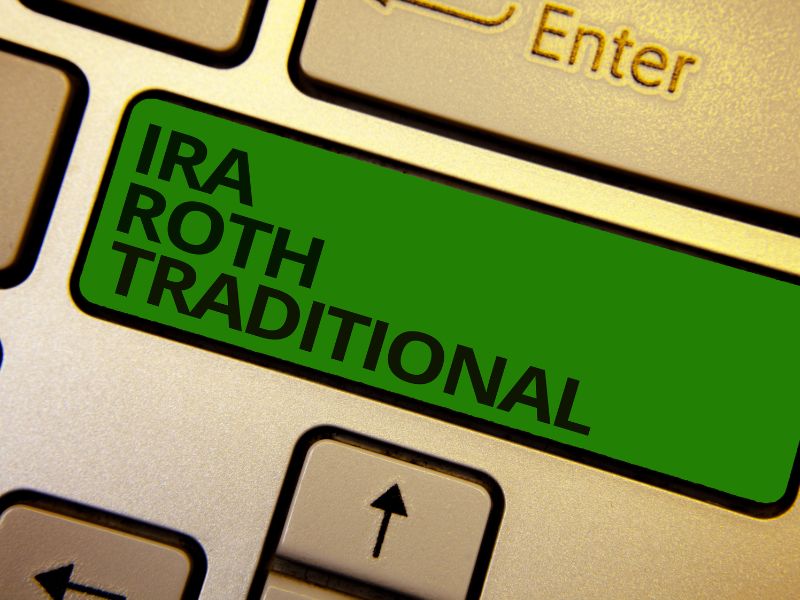When it comes to planning for retirement, choosing the right individual retirement account (IRA) can make a significant impact on your financial future. Two common choices are the Roth IRA and the traditional IRA. Understanding the differences between these accounts is crucial in making an informed decision that aligns with your goals and circumstances. Let’s delve into the key factors to consider when comparing Roth IRA vs traditional IRA.
Eligibility of Roth IRA vs Traditional IRA
| Eligibility Criteria | Roth IRA | Traditional IRA |
| Age Requirements | Individuals of any age can contribute to a Roth IRA. | Due to the new updates from SECURE Act, individuals of any age can now contribute to a traditional IRA from the year 2020 onward, without any age limitations. |
| Income Limits | The amount you can contribute to a Roth IRA is based on your annual income. | There are no restrictions based on your income. |
| Minors and nonworking spouses’ contributions | Minors and nonworking spouses may be able to make contributions, but you should review the specific income rules before proceeding. | Minors and nonworking spouses may be able to make contributions, but you should review the specific income rules before proceeding. |
With a traditional IRA, contributions are tax-deductible, but withdrawals are taxed.
With a Roth IRA, contributions are made with after-tax earnings, and qualified withdrawals are tax-free.
>>Read more:
Contribution rules of Roth IRA vs Traditional IRA
| Contribution Rules | Roth IRA | Traditional IRA |
| Tax Deductibility | You can’t have a deduction for your Roth IRA contribution. | You might have a deduction for some or all of your traditional IRA contributions from your taxes. However, if you or your spouse already have a retirement plan at work, the deductible amount could be lessened or completely removed. |
| Annual Contribution | In the tax year 2022:
In the tax year 2023:
*These contribution limits could be lower depending on your income level. |
In the tax year 2022:
In the tax year 2023:
*These contribution limits could be lower depending on your income level. |
| Catch-Up Contributions | Additional catch-up contributions allowed for individuals age 50 and older: $1,000 | Additional catch-up contributions allowed for individuals age 50 and older: $1,000 |
| The deadlines | The deadline typically falls on April 15th of the next year. | The deadline typically falls on April 15th of the next year. |
Withdrawal rules of Roth IRA vs Traditional IRA
| Withdrawal Rules | Roth IRA | Traditional IRA |
| Taxes on withdrawals | Withdrawals of your contributions from a Roth IRA are always tax-free. Additionally, if you withdraw your earnings after reaching the age of 59½ and satisfying the 5-year-holding-period requirement, you won’t have to pay taxes on those earnings either. | You will be subject to paying regular income tax on all the earnings in the account, as well as on any contributions that you previously claimed as deductions on your tax returns. |
| Early Withdrawal | Withdrawals of contributions made to a Roth IRA do not incur any penalties. However, if you withdraw the earnings from your Roth IRA before age 59½ and not meet the 5-year rule, you may be subject to a 10% federal penalty tax. | Withdrawal of earnings and contributions are considered as ordinary income and subject to regular tax. However, if you withdraw the earnings before 59½ and do not meet the 5-year rule, you may be subject to an additional 10%. |
| Required minimum distributions (RMDs) | Roth IRAs do not impose any required minimum distributions (RMDs) throughout your lifetime | Beginning January 1, 2023, alterations in federal legislation have affected the age when people need to start withdrawing required minimum distributions (RMDs) from their retirement funds. If you turned 72 on or before December 31, 2022, you were already required to take RMDs and must continue doing so. However, if you have not yet reached age 72 by December 31, 2022, your first RMD from a traditional IRA is due by April 1 of the year after you turn 73. From then on, you will need to take your annual RMD by December 31 each year. |
Should you choose a Roth IRA or Traditional IRA?
Deciding whether to open a Roth IRA vs traditional IRA depends on your personal financial situation and goals. The main difference between Roth IRA and traditional IRA is about paying taxes.
If you favor tax-free expansion and adaptable withdrawal options, a Roth IRA might be a good fit for you. On the other hand, if you want potential tax deductions now and are comfortable with paying taxes upon withdrawal, a traditional IRA might be a better choice. Read more about the Roth IRA pros and cons.

Is it possible to contribute to both a Traditional and a Roth IRA?
Yes, it is possible to contribute to both Roth and traditional IRA accounts in the same tax year, as long as you meet the eligibility criteria for both types of accounts. However, keep in mind that annual contribution limits apply across all your IRAs. It’s important to consider your financial situation and retirement goals before deciding to contribute to multiple IRAs.
Is maxing out an IRA a good idea?
Maxing out an IRA or contributing the maximum allowable amount each year can be a smart move for many individuals. By making the maximum contributions, you can take full advantage of the tax benefits and potential growth opportunities offered by an IRA. It helps you build a substantial retirement nest egg over time. However, it’s essential to assess your overall financial situation, including other financial goals and obligations, to ensure that maxing out your IRA is a suitable strategy for your circumstances.

When making decisions about Roth IRA vs Traditional IRA which is best for you, it’s essential to seek personalized advice from a financial advisor who could help you analyze your overall financial status. By considering your tax liabilities, long-term financial goals, and risk tolerance, you can choose the IRA that aligns with your aspirations.

Sources: books.google.com.hk